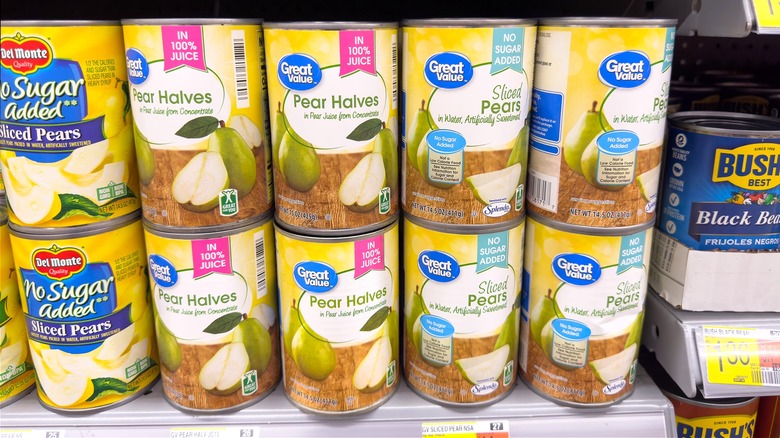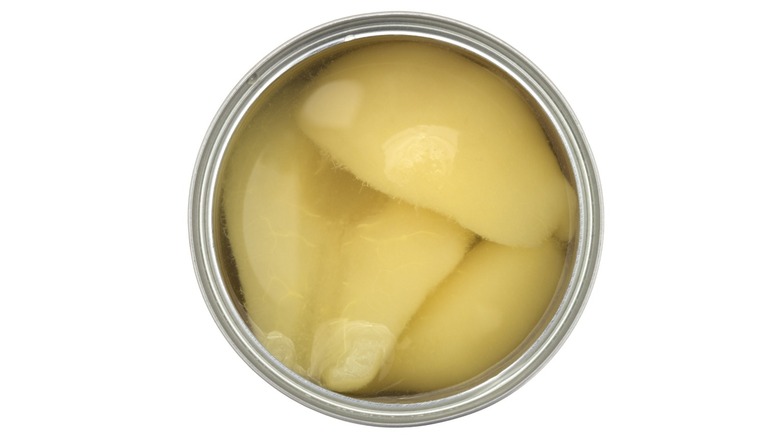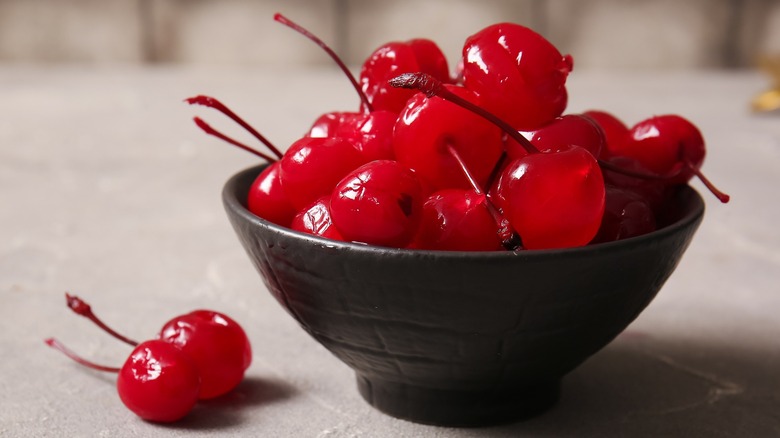The Popular Fruit You May Want To Avoid Buying Canned
Are you a canned food fan? Who isn't? Canned foods provide the ultimate convenience. They have a far longer shelf life than the fresh stuff and travel well, which means you can enjoy your favorite fruits all year long or sample fruits grown far away. But despite all these benefits, not all canned fruits are created equal. Some are best left on store shelves, and, when considering which canned foods to avoid, one popular option comes to mind: pears.
Pears don't shine in their canned form. Depending on the variety, the texture of a fresh pear can be crisp, buttery, or somewhere in between. The peel can be a bit tart, while the flesh is juicy, sweet, and super flavorful. However, canned pears lose this robust profile. Most canned pears are peeled, so you can say goodbye to that element. Meanwhile, the canned fruit loses much of that unique pear flavor, and can be hard and slightly gritty.
However, taste isn't the only reason to avoid purchasing canned pears. The canning process can affect fruit in a variety of ways, from texture and flavor changes to nutritional concerns. And sadly, this isn't the only canned fruit that disappoints. So before you head to the grocery store, let's dive deeper into why pears and other canned fruits aren't the best choices for your pantry.
Why you shouldn't buy canned pears
Nutritionally speaking, canned pears can't keep up with their fresh counterparts. The BBC reports that canned pears have less vitamin C due to the heat emitted during the canning process. With that said, canned foods retain their vitamin content longer, while fresh fruit depletes vitamins with time. So, if nutrient density is your top priority, eat fresh pears at their peak ripeness.
Canned pears also often come swimming in a sweet syrup. Not only does this juice overwhelm the pear's flavor, but it also means that the canned fruit is loaded with sugar. Take Del Monte's Bartlett Pear Halves in Heavy Syrup, for example. The first two ingredients in this product may be pears and water, but it's followed by three types of sweeteners, one of which is high fructose corn syrup. A half cup has 100 calories and 21 grams of sugar, while the same amount of fresh Bartlett pears has only 44 calories and 11 grams of sugar.
If you end up purchasing canned pears, check that nutrition label carefully. There's a big difference between light and heavy syrup in canned fruit. But even if canned pears are advertised as "no sugar added," they might contain harmful preservatives and artificial sweeteners. Del Monte's No Sugar Added variety contains sucralose. This is concerning because a 2013 study published in the Journal of Toxicology and Environmental Health has linked sucralose to negative health outcomes like metabolic syndrome, type 2 diabetes, and cardiovascular disease.
Other canned fruits to avoid
Much like pears, fruits frequently canned in heavy syrups should be avoided. Peaches, fruit cocktails, and mandarin oranges are common culprits. The sugar content of these fruits is far higher than their fresh equivalents. Plus, the syrup detracts from the fruit's natural sweetness. If we wanted candy, we'd head down a different supermarket aisle. But if it's fruit we're after, we prefer a more authentic flavor.
Some fruits also lose their textural integrity through the canning process. It's almost impossible for berries to maintain their form when canned; they become soft, mushy, and almost appear muddled. However, canned berries would actually work well muddled in cocktails, as a baking ingredient, or for homemade jams. The same is true of bananas. They're already so soft that canning them would turn them into something reminiscent of baby food. Ultimately, when it comes to presentation, these canned fruits don't hold up, literally.
Lastly, some canned fruits are overly processed, making them far removed from their natural state. Maraschino cherries are notorious for this. According to Healthline, they're bleached in a brine solution for weeks before bathing in another solution of red dye and sugar, and the result is a brightly pigmented cherry with far fewer nutrients than it started with. If you want to avoid overly processed fruit, we recommend making canned fruit at home instead.


